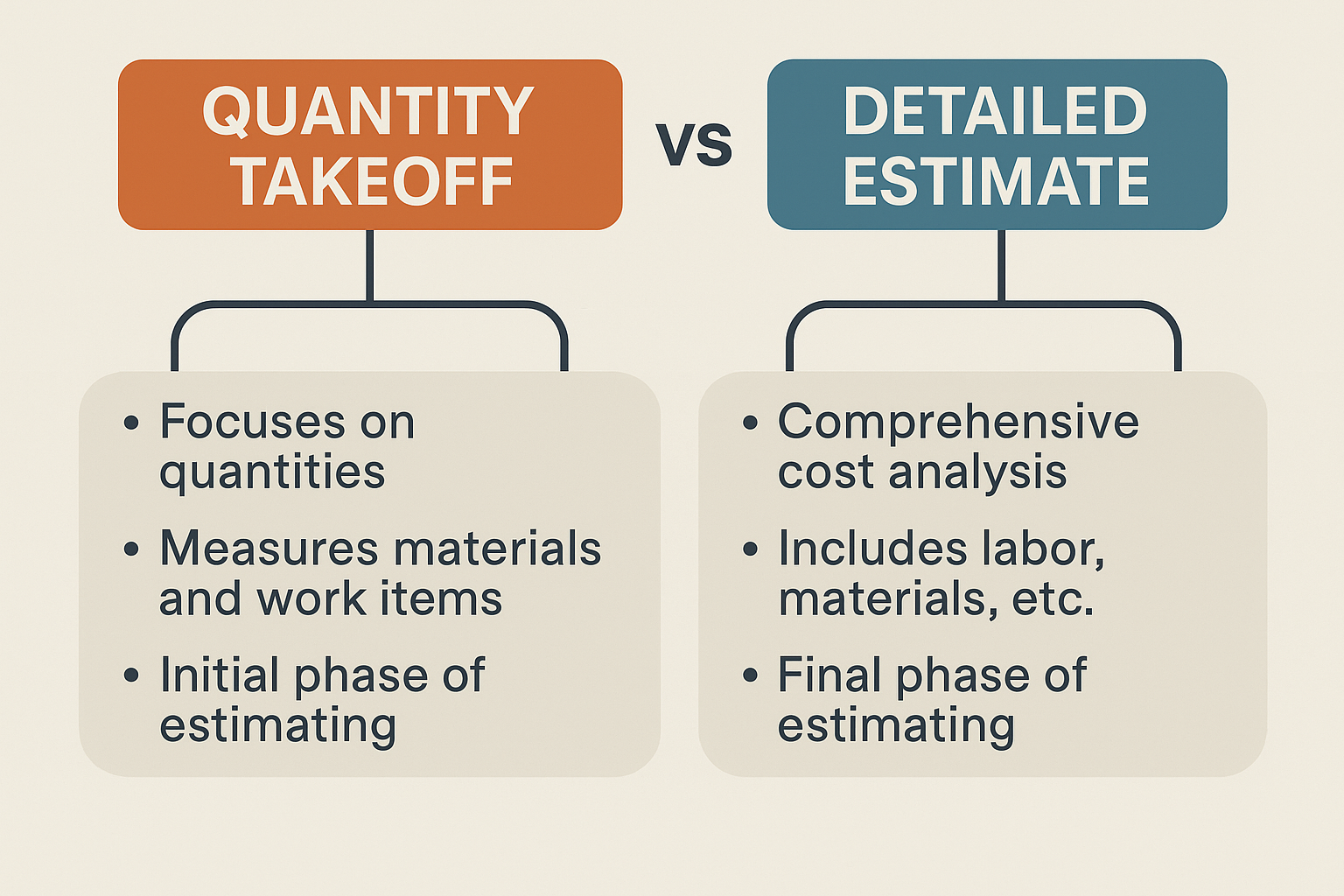In construction projects, various elements are crucial, and one of them is Quantity Takeoff. In simple terms, it refers to measuring how much material you need to carry out a construction project efficiently. Apart from that, there are several names for this term, such as construction takeoff, material takeoff, estimating takeoff, and quantity surveying. Typically, a takeoff in construction is carried out in the initial stages. This is because it serves as a foundation for cost estimating. It is aimed to provide an accurate count of materials.
Detailed Estimate – An Introductory Overview
On to that next element, which is a Detailed Estimate; It is a wider term that encompasses various other components other than materials. In other words, it will include all the costs, either direct or indirect, along with factoring in estimated profit margins. This means that detailed estimation is the process that provides a complete cost breakdown of the project.
Now that you have a better understanding of these two terms, let’s discuss in what aspects they differ from each other.
Key Differences Between QTO and Detailed Estimates
The following discussion will help you get a better perception of these two terms:
What is the Purpose?
Quantity takeoff
The focus of this process is to calculate the amount of materials needed to complete a project. It will provide raw data for the estimators to work with
Detail Estimates
The purpose of this process is to provide the full picture of a project’s financial requirements. This will include every component from primary costs like materials, labour, and equal to any other secondary costs
How Much Detail?
Quantity takeoff
As stated in the above discussion, this only deals with materials. This means it will only include details about raw materials, their types, and much quantity needed.
Detail Estimates
The level of detail is vast in these estimates. They will cover each aspect of the project, including all the costs, from planning stages to actual physical construction work till completion.
Who can use it?
Quantity takeoff
It is primarily used by estimators or quantity surveyors. They have to ensure that the materials acquisition process is according to the project requirements.
Detail Estimates
This is used for almost all professionals working on a project. It can be a general contractor or a project manager. They will use them for preparing and submitting bids. On the other hand, it can also be used by clients to assess the financial condition of a project.
From the above discussion, you must have a clear picture of how these two processes differ from one another. Now we will discuss at what stages of a construction project each of these processes is ideal to apply.
Stages to Implement a Quantity Takeoff
Budget Planning
In any construction project, the first component that is acquired is material. A QTO will help in quantifying the materials needed. Thus, this way you can start shaping your budget and plan for labour and other resources accordingly.
Design Altering
In a construction project, changes are inevitable. So, a QTO can be generated to adjust material quantities as per alterations. Construction Takeoff Services for budget control often account for any change orders in plans and make sure the budget doesn’t go out of hand. Not to mention they create a contingency plan in case of any hidden expenses. It is important to ensure that every change is recorded and updated to avoid any misunderstanding.
Stages Where Detailed Estimating is Done
Bidding and tendering
These estimates are used during the tendering phase. As they are used by contractors to ensure that their bids are accurate.
Budget Finalization
Once completed, these estimates will finalize a budget. Every cost, from the start of a construction project to completion, is considered. These estimates are then helped in finalizing the budget and allocating resources as per requirements.
Contract Negotiations
This also helps during the phase of contract negotiations. As all the stakeholders will have a clear picture of a project’s financials. Thus, their expectations will automatically be aligned.
Now you have a clear understanding of how these two vary from one another. Let’s have a look at the common mistakes during these processes.
Common Mistakes to Avoid
Overlooking Small Items
During QTO, sometimes estimators only focus on the major materials like steel, concrete, and lumber. Thus, overlooking items like nails, screws, or adhesives. This can lead to inaccurate estimates, thus compromising Cost Estimation Services.
No timely Updates
As mentioned earlier, in a construction project, changes cannot be ignored. That is why when a change happens, it is important to update it as quickly as possible. So that everyone has access to the most current information.
Conclusion
Wrapping it all up, Quantity Takeoff and Comprehensive Estimation are essential for assuring success in a construction project. By understanding their differences in detail and where they can be implemented, you can steer through the process efficiently. Thus, this article helps you with that, as it discusses the primary differences. It also mentions in what scenarios each of them can be ideally implemented. Lastly, it also points out some common mistakes that must be avoided during these processes.

